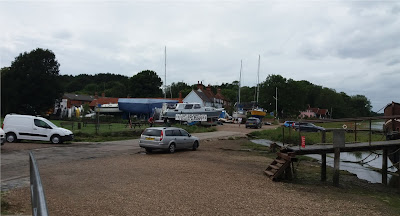 Just over two years ago I wrote a post about the pubs of Hadlow;
a large village in west Kent
close to my home town of Tonbridge. In the article I bemoaned the closure of several of Hadlow’s
pubs (three out of six, to be precise), and went on to say that the same thing
has been happening all over the country.
Just over two years ago I wrote a post about the pubs of Hadlow;
a large village in west Kent
close to my home town of Tonbridge. In the article I bemoaned the closure of several of Hadlow’s
pubs (three out of six, to be precise), and went on to say that the same thing
has been happening all over the country.
Now I’m not saying that this part of Kent
is bucking the trend, but over the last couple of years or so we have seen
several pubs reopen, after what, in some cases, were quite protracted periods of
closure. The fact which binds these pubs together is they are all former
Whitbread pubs. This is not entirely surprising, as during the latter half of the 20th Century Whitbread bought up a
number of local breweries, including Fremlins of Maidstone, Leney’s of
Wateringbury and Kelsey’s of Tunbridge Wells, and in some areas of Kent,
held a virtual monopoly on the pubs thereabouts.
Following the 1986 Beer Orders and the major shake-up in the
brewing industry which followed, several major players, such as Allied, Bass and Whitbread,
left the brewing game altogether. Most of their pubs passed into the hands of pub companies,
such as Enterprise, Punch or Admiral. We are all familiar with the story of how
these companies borrowed heavily to finance their purchases, and how they
eventually ended up totally indebted to the banks.
The Pub Co’s tried to recoup some of this money from their
hapless tenants, by charging rents way in excess of anything the likes of
Whitbread and the other former brewing companies had been charging, so it is small wonder that many publicans threw in the towel, and decided to quit the trade all
together. Two local pubs which fit into this category, were owned by the same
husband and wife team. Both had been successful and thriving businesses under
Whitbread’s ownership, but three to four years ago, both were forced to close
as the owners could just not make ends meet.
The change of ownership revealed another ticking time-bomb because a substantial number of the pubs acquired as a result of the Beer Orders, had been
suffering from a lack of maintenance over the years. Many were centuries old and now required major
renovation, not just to bring them into the 21st Century but, in
some cases to stop them from falling down altogether.
I’m not sure exactly when the rot set in, if you will pardon
the pun! I would imagine that a large brewery company, such as Whitbread, with
its tied estate management division would at least have carried out some basic
maintenance on their pubs. With the cash-strapped Pub Co’s though, there wasn’t
the money for even this basic level of maintenance. Stories circulated locally
about pubs requiring major structural, or even new roofs. If under the terms of the lease, some of the
cost of these works was down to the tenants, this would have been the
final straw. The area. therefore witnessed a number of once thriving pubs being closed and boarded up; their fate unknown.
Fortunately, not all were lost for good. as in some instances a knight in shining
armour, with deep pockets and a rugged determination to bring these former
locals back to life, came to the rescue. Slowly, and in some cases very slowly, we began to notice
building work going on at some of these pubs. Three specific, and quite prominent examples spring to mind; all of
them former Whitbread pubs, and all rescued and restored by sympathetic new owners.
In one noteworthy instance, a titled lady living locally,
bought the village’s sole remaining pub, paid for some quite major renovation
work to be carried out; work which included a new roof, and eventually
re-opened it. She installed a carefully-picked management team to run the place
and whilst some might say the pub is far more up-market than it once was, at
least it is trading again and providing somewhere for the local community to
gather and meet.
Another re-opening involved a substantial pub-cum-hotel,
situated right in the heart of a popular tourist village, and virtually next
door to one of the region’s most treasured and historic houses which dates back
to Tudor times. Again the property concerned required substantial renovation work,
which led to its closure over a lengthy period, whilst a suitable buyer was
sought, and the necessary work was carried out.
A similar situation applied to another historic old inn, a
few miles away; a pub which had been owned by the husband and wife partnership
I referred to above. This pub too required substantial work to bring it up to
modern day standards, and I’m happy to report this has now been completed and
the pub is open once more for business.
Now I am not going to reveal the names of these re-opened
pubs; at least not yet, as I would like to write about each one in a little
more detail. I will be doing this in a later post, although I’m sure sharp-eyed
local readers will know the three establishments I am talking about from the
photos.
The common factor which unites the three pubs is their reliance today on the food
trade. All are “destination” eating places, and one is also a thriving hotel.
Fortunately though, both casual and local drinkers are still made to feel
welcome, so whilst they might not be the simple country alehouses they once were,
at least they are still serving good beer to accompany the food.
To be continued............................................................................













































